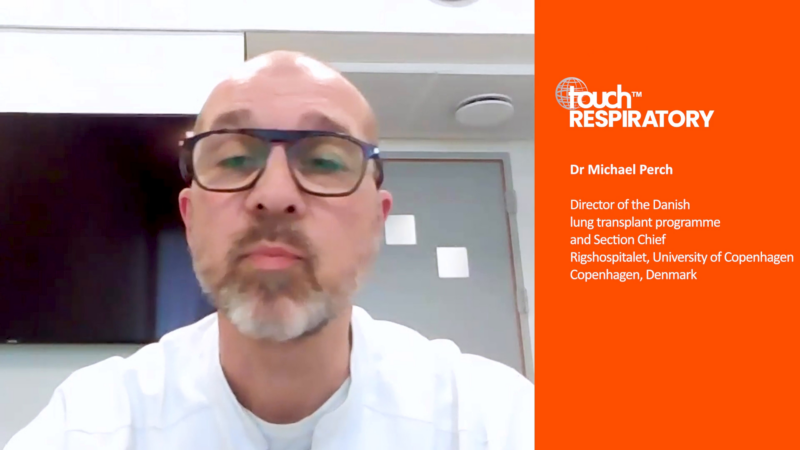touchIN CONVERSATION
 A relaxed discussion between two faculty focussed on real world clinical issues. Useful tips below will show how to navigate the activity. Join the conversation.
Close
A relaxed discussion between two faculty focussed on real world clinical issues. Useful tips below will show how to navigate the activity. Join the conversation.
Close
 A relaxed discussion between two faculty focussed on real world clinical issues. Useful tips below will show how to navigate the activity. Join the conversation.
Close
A relaxed discussion between two faculty focussed on real world clinical issues. Useful tips below will show how to navigate the activity. Join the conversation.
Close
Minimizing the clinical burden of chronic rhinosinusitis with nasal polyposis
- Select in the video player controls bar to choose subtitle language. Subtitles available in English, French, German, Italian, Japanese, Spanish.
- Downloads including slides are available for this activity in the Toolkit
Learning Objectives
After watching this activity, participants should be better able to:
- Describe the burden of disease of CRSwNP and the importance of early diagnosis
- Explain the pathophysiology of CRSwNP and how this can guide treatment decisions
- Summarize the clinical evidence supporting the use of current and emerging treatment options for CRSwNP
Overview
In this activity, ENT specialists Prof. Valerie Lund and Dr Sietze Reitsma discuss the burden of CRSwNP, its underlying pathophysiology, and current and emerging treatment options; their discussion on these themes is based on questions posed by healthcare professionals involved in the care of patients with CRSwNP.
This activity is jointly provided by USF Health and touchIME.
Target Audience
This activity has been designed to meet the educational needs of allergists and immunologists, ENT specialists, pulmonologists and respiratory care specialists, primary care physicians and specialty nurses involved in the management of CRSwNP.
Disclosures
All individuals in a position to influence content have disclosed to USF Health any financial relationship with an ineligible organization. USF Health has reviewed and mitigated all relevant financial relationships related to the content of the activity. The relevant relationships are listed below. All individuals not listed have no relevant financial relationships.
Faculty
Prof. Valerie Lund discloses: Advisory board or panel fees from GlaxoSmithKline, Novartis and Sanofi. Speaker’s bureau fees from Abbott, GlaxoSmithKline, Novartis and Sanofi.
Dr Sietze Reitsma discloses: Advisory board or panel fees from GlaxoSmithKline, Novartis and Sanofi. Consultancy fees from GlaxoSmithKline, Novartis and Sanofi. Grants/research support from GlaxoSmithKline, Novartis and Sanofi.
Content reviewer
Kayley Wagner, APRN has no financial interests/relationships or affiliations in relation to this activity.
Touch Medical Director
Katrina Lester and Christina Mackins-Crabtree have no financial interests/relationships or affiliations in relation to this activity.
USF Health Office of Continuing Professional Development and touchIME staff have no financial interests/relationships or affiliations in relation to this activity.
Requirements for Successful Completion
In order to receive credit for this activity, participants must review the content and complete the post-test and evaluation form. Statements of credit are awarded upon successful completion of the post-test and evaluation form.
If you have questions regarding credit please contact cpdsupport@usf.edu.
Accreditations
Physicians
This activity has been planned and implemented in accordance with the accreditation requirements and policies of the Accreditation Council for Continuing Medical Education (ACCME) through a joint providership of USF Health and touchIME. USF Health is accredited by the ACCME to provide continuing medical education for physicians.
USF Health designates this enduring material for a maximum of 1.0 AMA PRA Category 1 CreditTM. Physicians should claim only the credit commensurate with the extent of their participation in the activity.
The European Union of Medical Specialists (UEMS) – European Accreditation Council for Continuing Medical Education (EACCME) has an agreement of mutual recognition of continuing medical education (CME) credit with the American Medical Association (AMA). European physicians interested in converting AMA PRA Category 1 CreditTM into European CME credit (ECMEC) should contact the UEMS (www.uems.eu).
Advanced Practice Providers
Physician Assistants may claim a maximum of 1.0 Category 1 credits for completing this activity. NCCPA accepts AMA PRA Category 1 CreditTM from organizations accredited by ACCME or a recognized state medical society.
The AANPCP accepts certificates of participation for educational activities approved for AMA PRA Category 1 CreditTM by ACCME-accredited providers. APRNs who participate will receive a certificate of completion commensurate with the extent of their participation.
Nurses
USF Health is accredited as a provider of nursing continuing professional development by the American Nurses Credentialing Center’s Commission on Accreditation.
A maximum of 1.0 contact hours may be earned by learners who successfully complete this continuing professional development activity. USF Health, the accredited provider, acknowledges touchIME as the joint provider in the planning and execution of this CNE activity.
This activity is awarded 1.0 ANCC pharmacotherapeutic contact hour.
Date of original release: 26 April 2022. Date credits expire: 26 April 2023.
If you have any questions regarding credit please contact cpdsupport@usf.edu.
To obtain the CE/CME credit(s) from this activity, please complete this post-activity test.
Claim Credit- Select in the video player controls bar to choose subtitle language. Subtitles available in English, French, German, Italian, Japanese, Spanish.
- Downloads including slides are available for this activity in the Toolkit
You may also be interested in...

Register to touchRESPIRATORY for FREE
- Peer-reviewed journals and expert opinions
- Interactive CME and e-learning modules
- Video conference highlights

Log into your Touch Account
Earn and track your CME credits on the go, save articles for later, and follow the latest congress coverage.
Sign up with an Email
Or use a .
This Functionality is for
Members Only
Explore the latest in medical education and stay current in your field. Create a free account to track your learning.






















